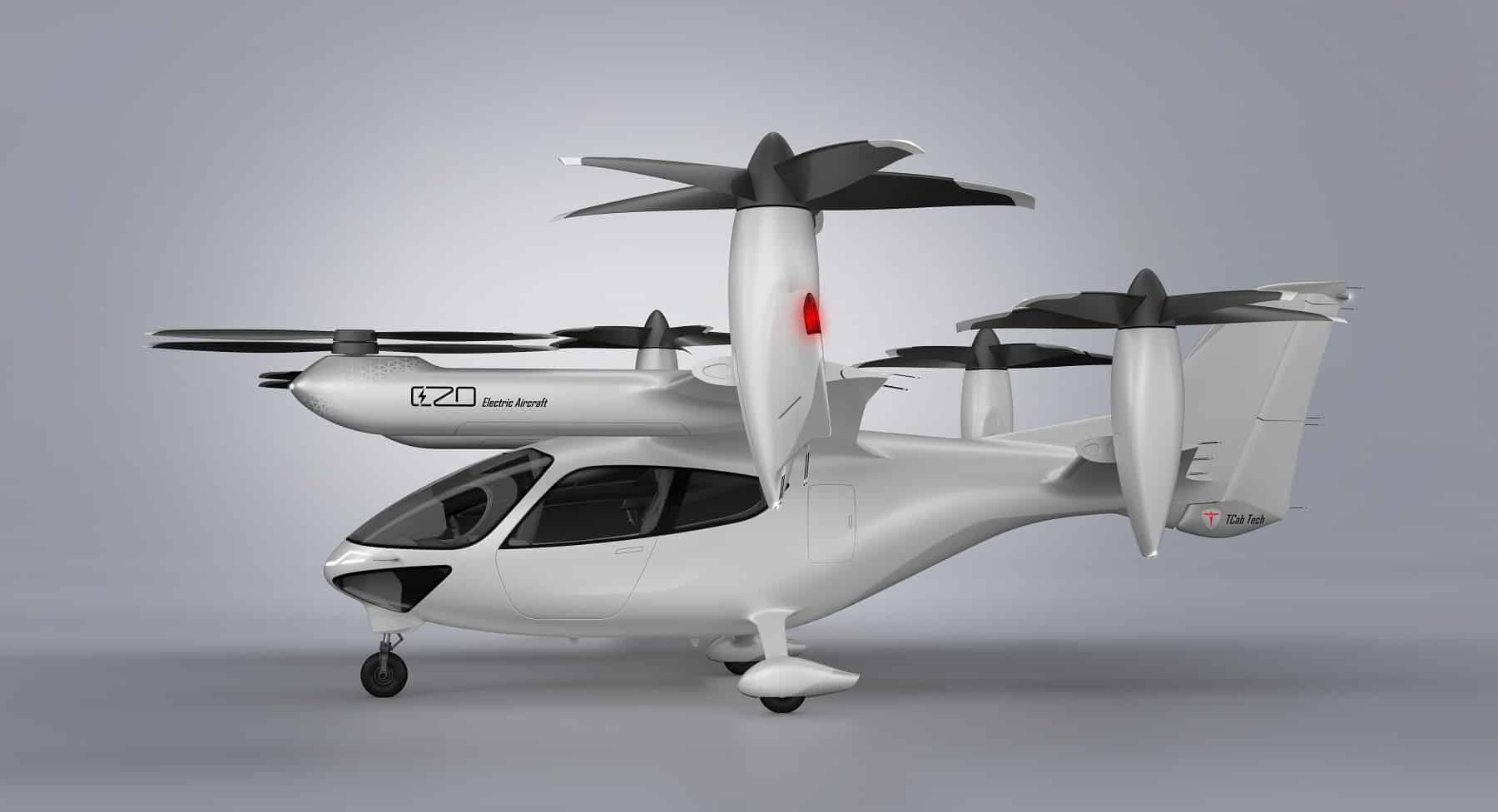Aerospace
TCab Tech partners with Safran on the electric motors for the E20 eVTOL

TCab Tech is currently developing E20, a 5-seater passenger-carrying eVTOL aircraft equipped with six rotors – four tilt and two lift rotors – and a high gull-wing with a conventional tailplane design. The eVTOL targets a maximum design range of 200km, and a cruising speed of 260km/hour. Safran Electrical & Power will supply all six ENGINeUSTM electric smart motors. CAAC (Civil Aviation Administration of China) certification for the E20 is expected by 2025.
Is China’s COMAC C919 better than B737max and A319neo ?
The ENGINeUSTM product line includes a broad range of electric motors with power outputs from single digit to 500 kW. The ENGINeUSTM 100, that will equip the E20, delivers more than 100 kW at take-off and features a fully integrated motor controller within the machine. The thermal management is provided by an optimized air-cooling system. The certification of the electric motor is planned for mid-2023.
Boeing 737 carrying 132 passengers and crew crashes in southern China.

Aerospace
Boeing Transfers Rocket Stage to NASA, Paving Way for Human Moon Mission

Boeing has achieved a significant milestone by providing NASA with the second core stage of the Space Launch System (SLS) rocket.
This crucial component, crafted at NASA’s Michoud Assembly Facility (MAF), is set to propel the Artemis II crew into lunar orbit, marking humanity’s return to deep space after a 50-year hiatus.
The monumental Boeing-built rocket stage, the largest element of the Artemis II mission, will embark on a journey aboard the Pegasus barge, traveling 900 miles to NASA’s Kennedy Space Center.
Comparison of two legendary aircraft B777x vs B747 aircraft:Click here
Upon arrival, it will be meticulously integrated with other essential Artemis II components, including the upper stage, solid rocket boosters, and NASA’s Orion spacecraft within the iconic Vehicle Assembly Building. This intricate integration process is a vital step toward the eagerly anticipated Artemis II launch, slated for 2025.
“Boeing-built products helped land humankind on the moon in 1969, and we’re proud to continue that legacy through the Artemis generation,” remarked Dave Dutcher, vice president and program manager for Boeing’s SLS program. “Together, with NASA and our industry partners and suppliers, we are building the world’s most capable rocket and paving the way to deep space through America’s rocket factory in New Orleans.”
NASA, Lockheed Martin Reveal X-59 Quiet Supersonic Aircraft:Click here
The delivery of Core Stage 2 marks a significant achievement in the evolution of the SLS rocket. Towering over 200 feet and powered by four RS-25 engines, this core stage, coupled with two solid-fueled booster rockets, will generate a staggering 8.8 million pounds of thrust. This immense power is crucial to launching Artemis II and future missions into the vast expanse of space.
The SLS rocket stands unparalleled in its capability to transport both crew and substantial cargo to the moon and beyond in a single launch. Its extraordinary capacity will facilitate the delivery of human-rated spacecraft, habitats, and scientific missions to destinations including the moon and Mars, ushering in a new era of space exploration.
-

 Travel1 week ago
Travel1 week agoAir India to Expand US Operations with Three New Routes After a Decade
-

 Travel2 weeks ago
Travel2 weeks agoWhy We Should Avoid These Stamps in a Passport
-

 Airlines1 month ago
Airlines1 month agoInvestigations Reveal Fake Chinese Titanium in Boeing and Airbus Jets
-

 Tech4 weeks ago
Tech4 weeks agoChina’s CATL Plans 1,800-Mile Electric Plane Launch by 2027
-

 Airport3 days ago
Airport3 days agoTop 10 Largest Airports in the World by Size
-

 Aerospace4 weeks ago
Aerospace4 weeks agoChina’s Fighter Jets Turn Wings into Autonomous Drones
-

 Airlines4 days ago
Airlines4 days agoAir India Rolls Out A350s for Delhi-New York JFK and Newark Routes
-

 Defence3 weeks ago
Defence3 weeks agoBoeing Enhances Chinook with New Engines and Block II Upgrades at $96 Million







